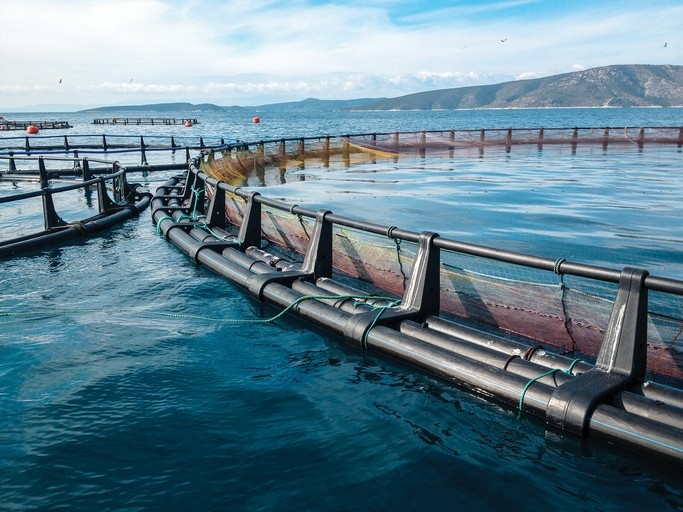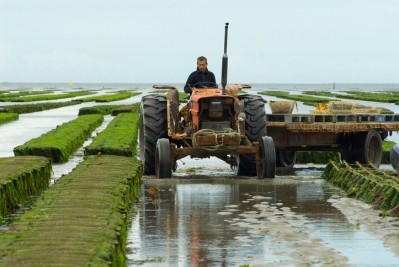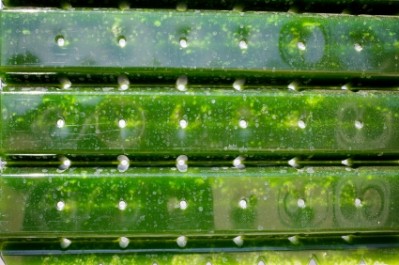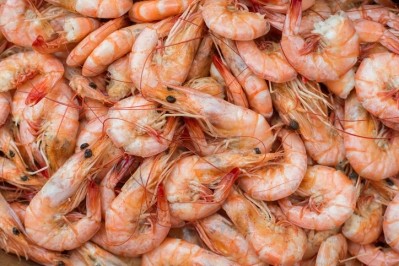Innovation prize is about ensuring continued growth in aquaculture industry

The competition was started by the Future of Fish Feed (F3) group and is being sponsored by the University of Arizona, University of Massachusetts Boston, Synbiobeta, Anthropocene Institute and the World Bank.
Kevin Fitzsimmons, competition judge and professor at the University of Arizona, presented on the fundamentals of the challenge during a webinar. The contest closes in September 2019.
The expected growth in global population means that there needs to be an increase in the amount of food and high-quality protein generated, he said. Fish and shrimp are highly efficient in terms of feed conversion and offer important nutrients.
However, several aquaculture species rely on the use of fishmeal and fish oil derived from wild-caught fish in their diets, he said.
“There is a limited supply [of those marine resources] and if we want aquaculture to continue to grow we’ve got to find alternative ingredients for these proteins,” he added.
Michael Tlusty, judge with the challenge and associate professor at the University of Massachusetts Boston, told us the goal is to provide producers with alternatives to fish oil that are sustainable, to ensure the industry has a larger suite of ingredients to choose from.
Challenge details
“The first contest that we had was focused on fishmeal replacement, and it turned out to be a huge success,” said Fitzsimmons. “We had eight teams from around the globe that participated in this contest, and between those eight, they sold over 120,000 metric tons of fish feed without marine proteins – no fishmeal and no fish oil – and we thought that was the equivalent of leaving about 120m forage fish in the ocean.”
The current competition grew out of the concern that both fishmeal and fish oil may act as a “bottleneck” for future aquaculture expansion, he said.
“This contest is going to focus on alternatives for fish oil and especially these essential fatty acids.”
Registration for companies or teams that want to take part in the challenge is April 30, said Fitzsimmons. But samples of the replacement oil product do not need to be submitted for analysis until November 30.
Teams and companies selling the product can register, he said. However, the company that is actually selling the oil should be the lead entrant, he said.
Thus far, there are three participants registered for the competition, they said.
The product samples will be analyzed to make sure they meet the requirements for fatty acid components, said Fitzsimmons. Quarterly sales reports also will need to be submitted, with the winner earning a $100,000 prize.
“There is no cost to this and you can continue to participate even if you don’t think you’re really making enough to be competitive,” he said. The competition also includes networking opportunities for those involved, he added.
The winner will be the company or team that has sold the largest amount of product containing DHA, EPA and ARA, reported the F3 organization. Eligible products need to be either in powdered or liquid form, be free of any marine animal ingredient and have specified minimum levels of certain fatty acids.
The minimum profiles for the fatty acid profile includes ARA at a minimum of 0.2% of the total fat, EPA at 8.4% of the total fat and DHA at 4.9% of the total fat with an n3:n6 ratio of 12, the organization stated. The sales need to be tracked by customer, only relate to the oil product and be used in aquaculture feed products.
The feeds can use any non-marine animal source as an F3oil for the competition, the organizers said. Algae and plant-based sources can be used.
Additionally, the final feed in which the replacement oil is used can include marine-based products, said Fitzsimmons.
“We’re looking at increasing the sales of the alternative,” he said. “If they want to try it and replace half, we’re okay with that because we think that, in reality, that’s what most people are going to do – we want to encourage as much substitution as we can.”















